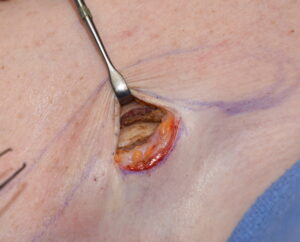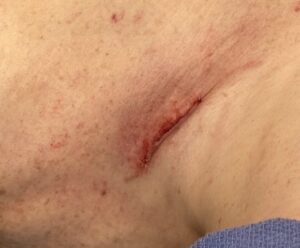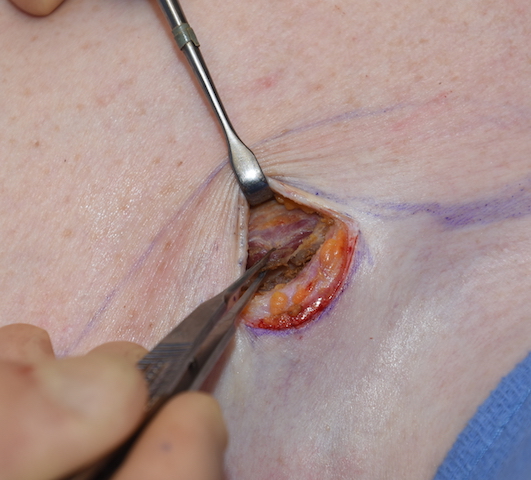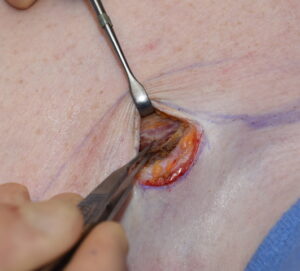The S-shape of the clavicle bone is anchored by very strong ligamentous attachments at both ends to joints of the sternum and scapula. Because of its horizontal orientation it also serves as a location for multiple muscle attachments of the neck, chest and shoulder. These muscles include from medial to lateral the sternocleidomastoid, pectoralis major, subclavius, deltoid and trapezius.


The one side effect of this muscle manipulation is that is actually the greatest source of postoperative discomfort. It is not the cutting of the bone but the detachment/reattachment of the pectoralis major muscle in particular that causes some persistent postoperative soreness. While this represents a relatively small area of pectoralis major muscle origin, which is much more extensive down along the sternum, it is an area that gets pulled on by elevation of the arm. This persists most significantly in the first few weeks after surgery but is largely resolved by four to six weeks when arm motion has largely returned to normal.
One of the interesting, but functionally insignificant, effects of bringing the released pectoralis major muscle section up over the fixation plate is that on flexion of the neck a band can be seen up along the course of the sternocleidomastoid muscle in some patients. This is the result of actually making a connection between the pectoralis and sternocleidomastoid muscle which are normally separated by the bone to which they are attached.
Dr. Barry Eppley
Indianapolis, Indiana





